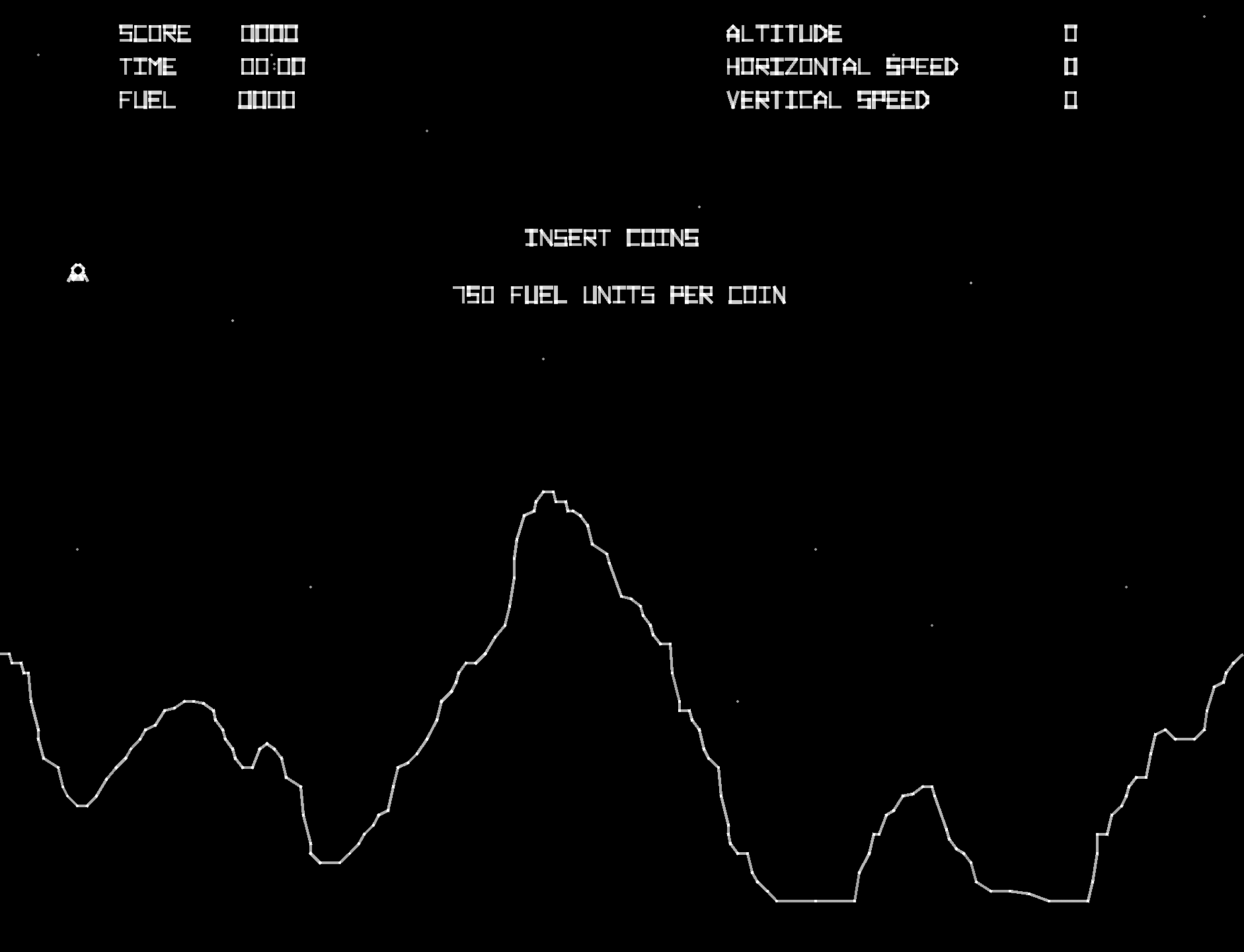Introduction
Released in 1979 by Atari, Lunar Lander was one of the first arcade games to feature vector graphics and realistic physics. Based on earlier mainframe experiments from the 1960s, Atari’s version challenged players to land a spacecraft safely on the moon using a limited fuel supply and accurate thrust control. With its striking black-and-white vector display and analog thruster control, Lunar Lander offered a uniquely cerebral and simulation-style experience during the height of reflex-based arcade games.
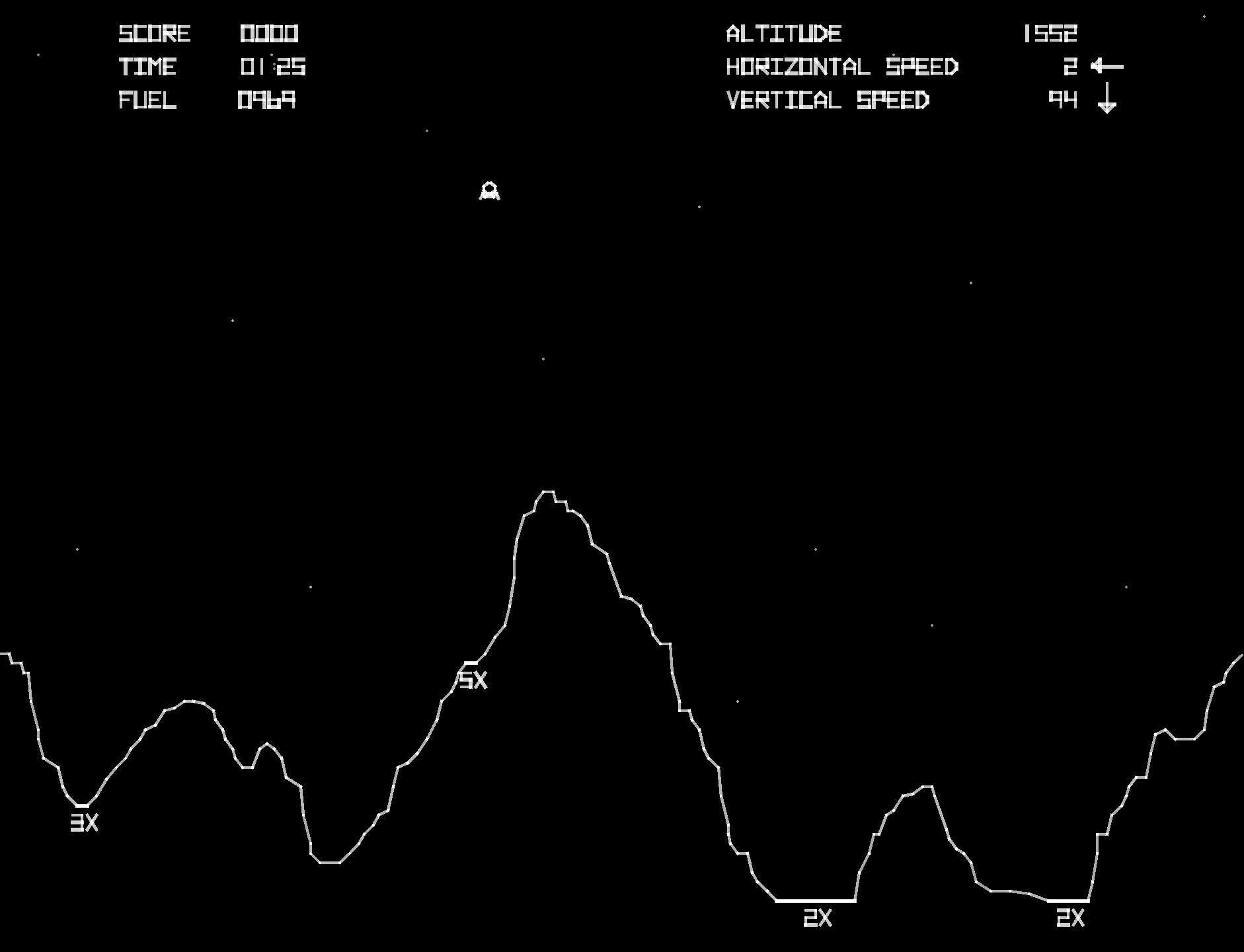
Development and History
- Developer: Atari, Inc.
- Publisher: Atari, Inc.
- Release Date: 1979
Lunar Lander was the first arcade game to use Atari’s newly developed vector graphics hardware, which later powered Asteroids. The game was inspired by early text-based versions of the lunar landing concept, such as those seen on PDP computers in the late 1960s.
Atari’s version brought the concept to life with smooth vector lines, a specialized thruster lever for analog control, and realistic gravity-based physics. Ed Logg and Howard Delman were key figures in the engineering and adaptation of the original concept into arcade form.
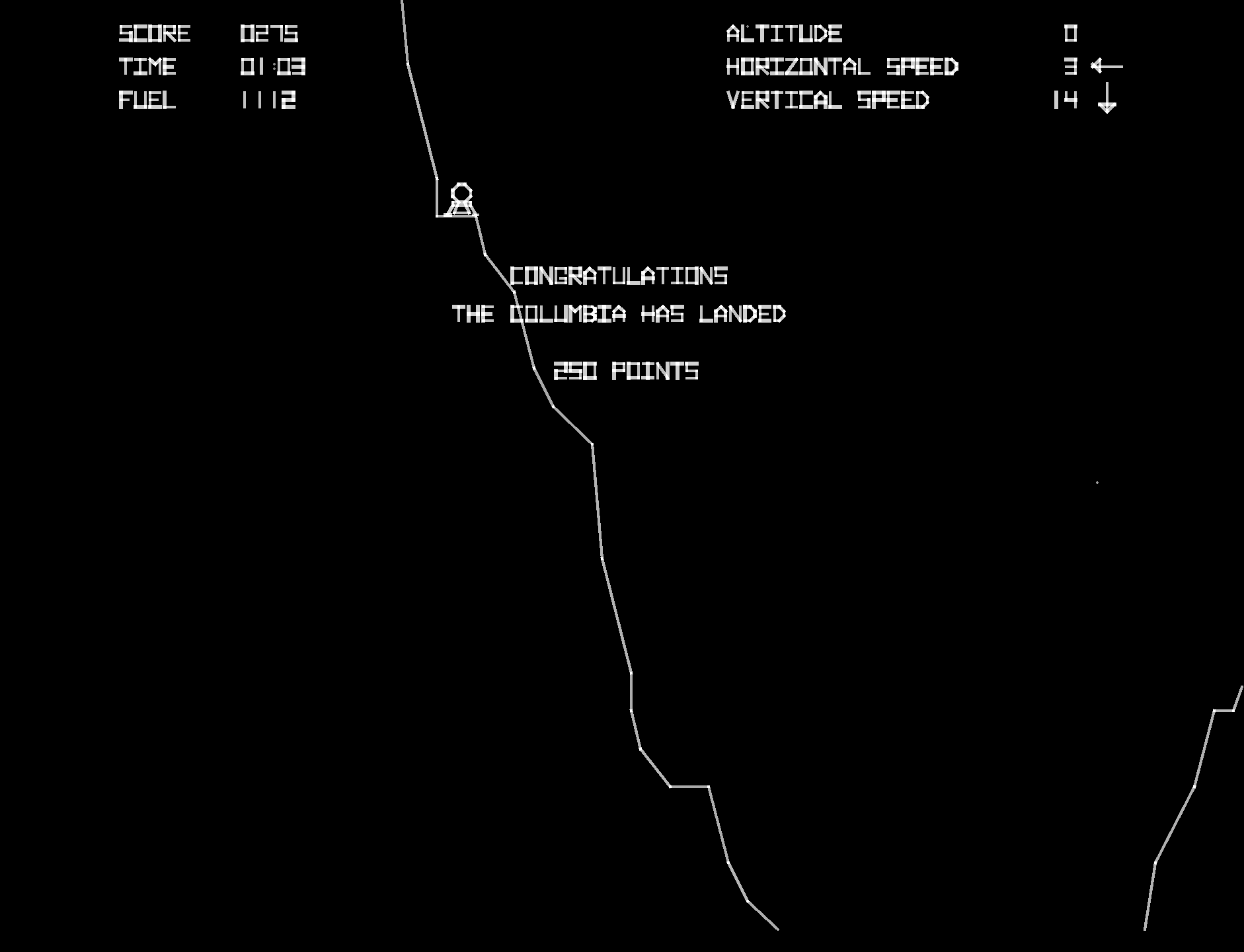
Gameplay Video
Gameplay and Mechanics
Core Gameplay
Players control a lunar module and must guide it to a safe landing on the moon’s surface, choosing from various terrain zones with differing point values and landing difficulty.
- Thruster Control: A physical lever lets players apply varying levels of thrust.
- Rotation Buttons: Players rotate the lander left or right to adjust trajectory.
- Gravity Physics: Accurate lunar gravity simulates real-time descent challenges.
- Fuel Management: Limited fuel requires careful resource planning.
Challenges
- Precision Required: Slight errors in thrust or angle can crash the lander.
- Landing Zones Vary: Narrow or rugged areas yield more points but are riskier.
- Increasing Difficulty: Later levels become more complex with trickier terrain.
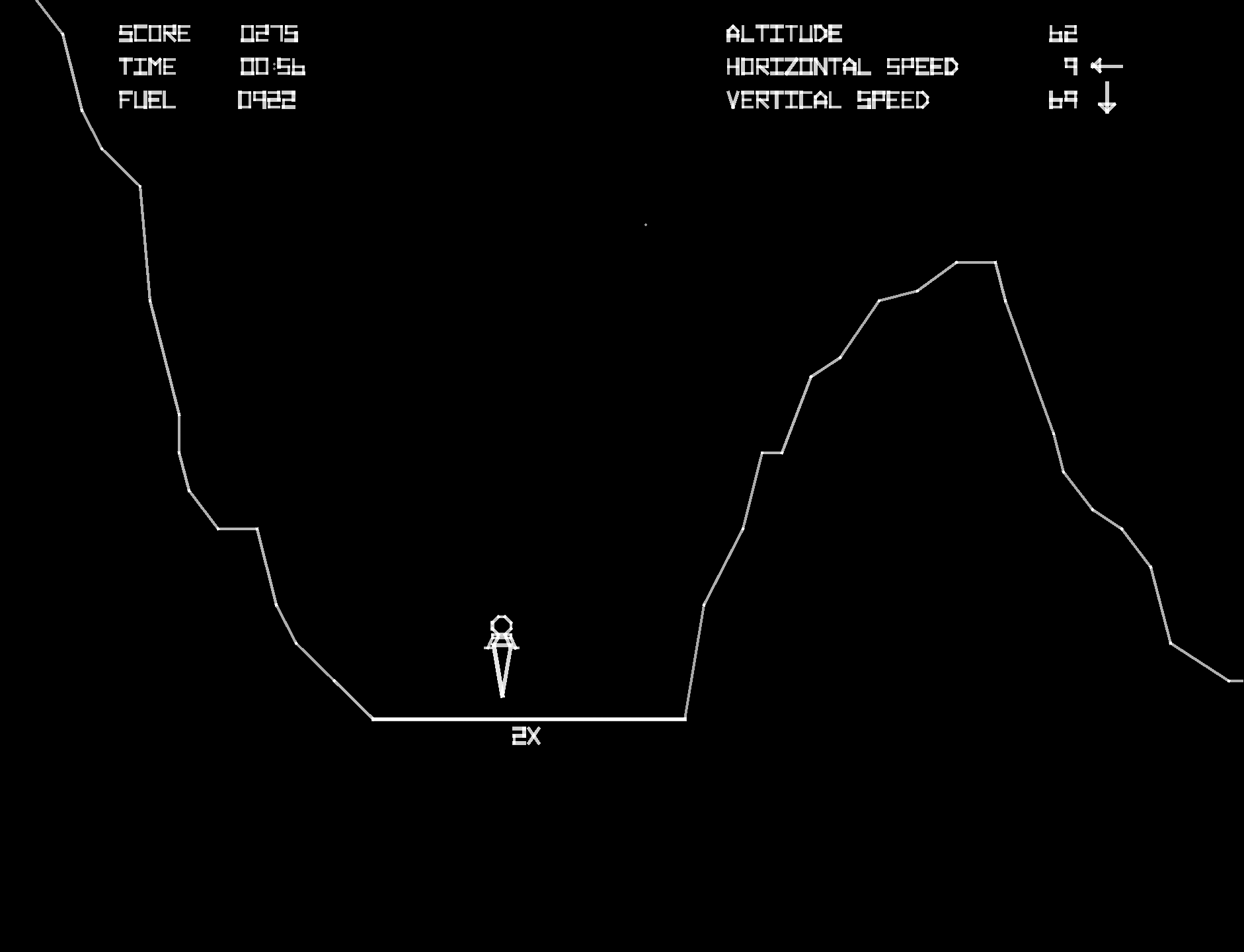
Cultural Impact and Legacy
Lunar Lander was not a blockbuster, but it was historically significant:
- First Vector Arcade Game: Set the stage for Asteroids and other vector-based hits.
- Scientific Appeal: Attracted players interested in space and simulation rather than fast-twitch gameplay.
- Educational Influence: The realistic physics model helped it gain attention in schools and learning centers.
- Re-Releases and Tributes: Included in later Atari collections and reimagined in various forms.
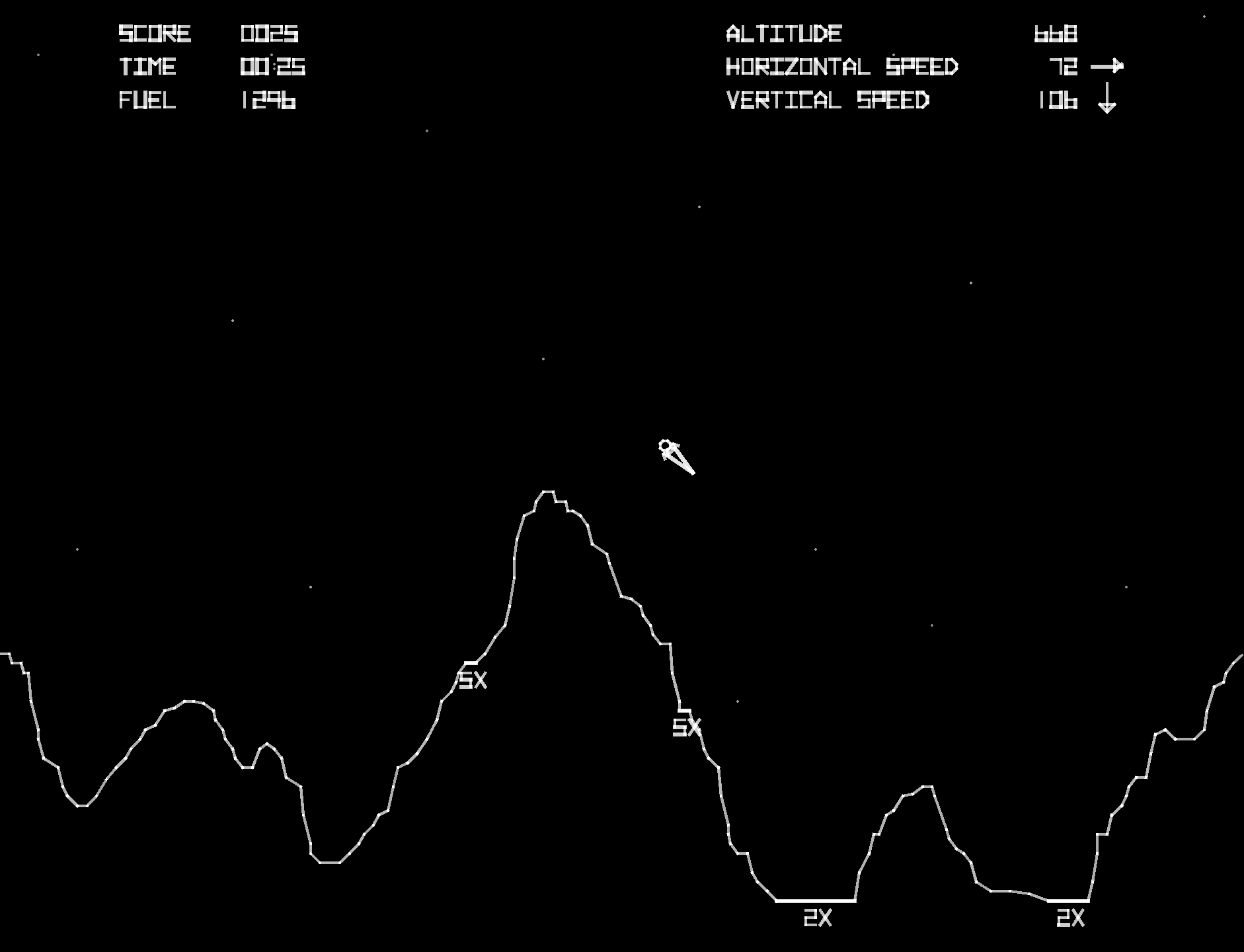
Fun Facts
- Cabinet Detail: The arcade cabinet featured a unique analog thruster lever instead of a joystick.
- Hidden Message: Crashing in certain ways could trigger an Easter egg message on rare occasions.
- Limited Production: Atari redirected focus to Asteroids, which used the same vector hardware but was more action-driven.
- Inspired by NASA: The gameplay model was loosely based on actual lunar module descent data.
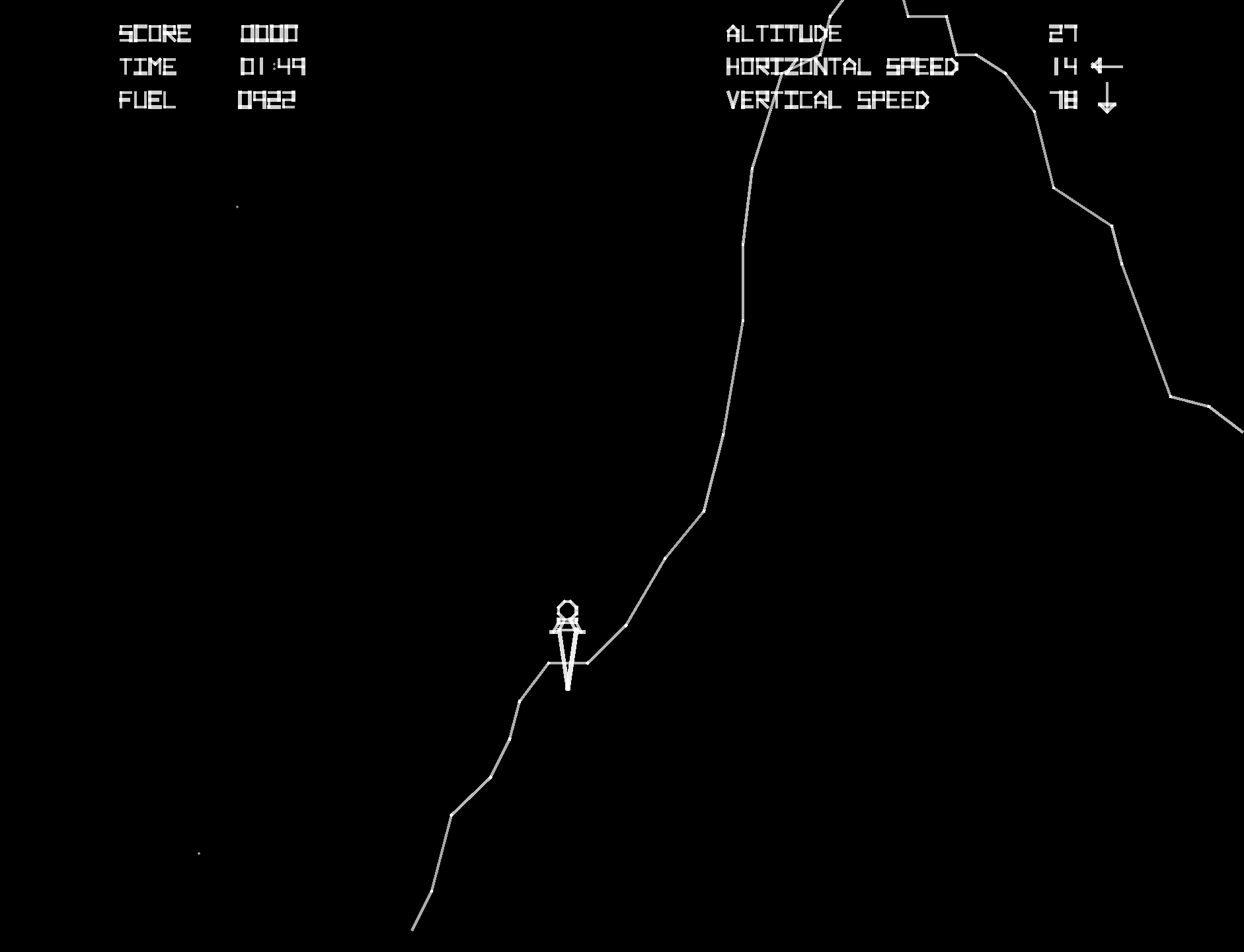
Conclusion
Lunar Lander was a pioneering moment for arcade gaming—offering players a blend of strategy, physics, and challenge that stood apart from the flashier titles of its time. Its legacy lives on in space simulation games and as a cornerstone in Atari’s hardware innovation. For fans of precision-based gameplay and vector nostalgia, Lunar Lander is a must-play artifact of arcade history.

